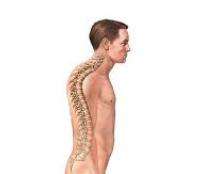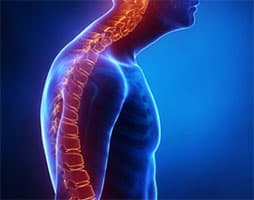 The etymological root of kyphosis is found in kýphos , a Greek word that can be translated as "convex." Kýphos led to kýphōsis , which came to our language as kyphosis: an atypical curvature of the spine in the dorsal area.
The etymological root of kyphosis is found in kýphos , a Greek word that can be translated as "convex." Kýphos led to kýphōsis , which came to our language as kyphosis: an atypical curvature of the spine in the dorsal area.
Let us remember that the vertebral column is the axis of the skeleton of vertebrates such as humans. It is made up of short bones known as vertebrae , which are articulated with each other and are located in a row. The adjective dorsal , for its part, refers to the back or back .
To understand what kyphosis is, we must know that the spine has normal curvatures that are classified as physiological . Other curvatures, however, are abnormal ( pathological ). Kyphosis, according to the definition provided by the dictionary of the Royal Spanish Academy ( RAE ), is a pathological curvature.
Kyphosis means that the spine curves more than usual , suffering a decrease in its ability to move inward. Even this decrease can be absolute. The person who suffers from kyphosis, therefore, has the body inclined, in a harmful posture.
One of the words that is usually used in these cases to describe the patient's appearance is "hump", precisely because his crouched posture produces a contour of the back that in profile can be perceived as that of a hunchbacked person.
Regarding the causes of kyphosis, which can occur in people of all ages, less frequently in newborns, there are many and we must divide them into at least two groups. On the one hand, there are those that correspond to kyphosis in adults , which may be the following:
* degenerative diseases that affect the spine, such as arthritis or disc degeneration;
* fractures that have occurred due to osteoporosis (which are called compression osteoporotic );
* various injuries;
* spondylolisthesis , that is, one vertebra sliding over another towards the front.
On the other hand, we have the following causes, which are not necessarily included in cases of adult kyphosis:
* some endocrine diseases, that is, hormonal diseases;
* connective tissue problems;
* tuberculosis or some other similar infection;
* muscular dystrophy, a series of inherited problems that cause muscle weakness and abnormal shrinkage of muscle tissue;
* neurofibromatosis, a condition that leads to the formation of tumors in nerve tissue;
* Paget's disease, which involves the deterioration and abnormal reconstruction of bone tissue ;
 * polio, a nerve disease that can cause partial or total paralysis;
* polio, a nerve disease that can cause partial or total paralysis;
* scoliosis, another disorder that generates an abnormal curvature in the spine, in this case in the shape of the letter S or C ;
* spina bifida, a congenital defect that prevents the correct closure of the vertebral canal and spine before birth;
* presence of certain tumors.
The most common kyphosis is called postural kyphosis . As the name suggests, it is due to poor posture . This kyphosis does not usually cause discomfort or inconvenience. Congenital kyphosis , on the other hand, is already present at birth and in some cases requires surgery .
Scheuermann's kyphosis , caused by the disease of that name, generates pain and various disabilities; It appears during the stage of adolescence and arises as a result of various consecutive bones of the spine squeezing together. The cause of Scheuermann's kyphosis is not known.
In addition to pain in the lower half of the back, kyphosis can cause fatigue, extreme sensitivity, and even breathing problems. That is why its treatment is always important.
